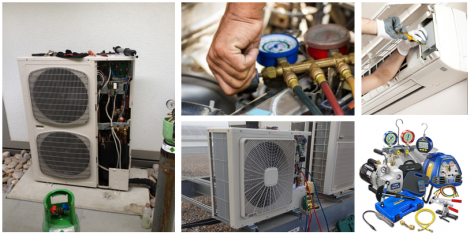Air Source Heat Pumps
Heat your home with energy absorbed from the air around you.
Air source heat pumps absorb heat from the outside air. This heat can then be used to
heat radiators, underfloor heating systems, or warm air convectors and hot water in
your home.
An air source heat pump extracts heat from the outside air in the same way that a
fridge extracts heat from its inside. It can get heat from the air even when the
temperature is as low as -15° C. Heat pumps have some impact on the environment as
they need electricity to run, but the heat they extract from the ground, air, or water is
constantly being renewed naturally.
How do air source heat pumps work?
Heat from the air is absorbed at low temperature into a fluid. This fluid then passes
through a compressor where its temperature is increased, and transfers its higher
temperature heat to the heating and hot water circuits of the house. There are two
main types of air source heat pump system:
An air-to-water system distributes heat via your wet central heating system. Heat
pumps work much more efficiently at a lower temperature than a standard boiler
system would. So they are more suitable for underfloor heating systems or larger
radiators, which give out heat at lower temperatures over longer periods of time.
An air-to-air system produces warm air which is circulated by fans to heat your home.
They are unlikely to provide you with hot water as well.
The benefits of air source heat pumps
Air source heat pumps (also known as ASHPs):
could lower your fuel bills, especially if you are replacing conventional electric heating
could provide you with an income through the government’s renewable heat
incentive (RHI)
could lower your home’s carbon emissions, depending on which fuel you are replacing
don’t need fuel deliveries
can heat your home and provide and hot water
need little maintenance
Unlike gas and oil boilers, heat pumps deliver heat at lower temperatures over much
longer periods. During the winter they may need to be on constantly to heat your home


